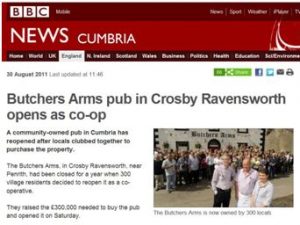Are you worried about reports of village school numbers dwindling, the closure of the local shop or pub, or the loss of other local facilities? In his 2008 report Living Working Countryside: The Taylor review of Rural Economy and Affordable Housing, Matthew Taylor MP summed up the challenges faced by rural areas and market towns like this:
“For many villages and hamlets the choice is between becoming ever more exclusive enclaves of the wealthy and retired, or building the affordable homes to enable people who work in these communities to continue to live in them. In many cases just a handful of well designed homes, kept affordable in perpetuity for local people, will make all the difference to the sustainability of the community and its services. At the same time, we need to make sure that there are better opportunities for the people who live in these small rural communities to find quality work, and build successful businesses. Otherwise we will see more and more villages turn into commuter dormitories, at the cost of fewer local jobs, declining local services, and the loss of genuine community life.”
Taylor also commented on the risk to market towns of becoming ringed “with anonymous housing estates, business and retail parks” to accommodate the increasing numbers migrating into them.
 In both rural areas and urban neighbourhoods, Taylor recommends involving local people in finding and delivering solutions that create “genuinely attractive” communities where people can want and can afford to live and work. This is where Community Land Trusts come in.
In both rural areas and urban neighbourhoods, Taylor recommends involving local people in finding and delivering solutions that create “genuinely attractive” communities where people can want and can afford to live and work. This is where Community Land Trusts come in.
Community Land Trusts (CLTs) are locally based organizations that own assets on behalf of their communities. Some CLTs specialise in the provision of affordable housing, some are running shops and pubs, or taking on the provision of schools and recreation facilities. CLTs are able to be versatile and to develop whatever social and economic amenities that meet the needs and interests of the community they operate in. CLTs range in size from small rural schemes running a single unit, to complex mixed-use schemes covering a wide area. Have a look at the case study page to see the what CLTs around the country are achieving, including Lyvennet CLT, which is behind the take over the Butcher Arms celebrated in the report on the right.

